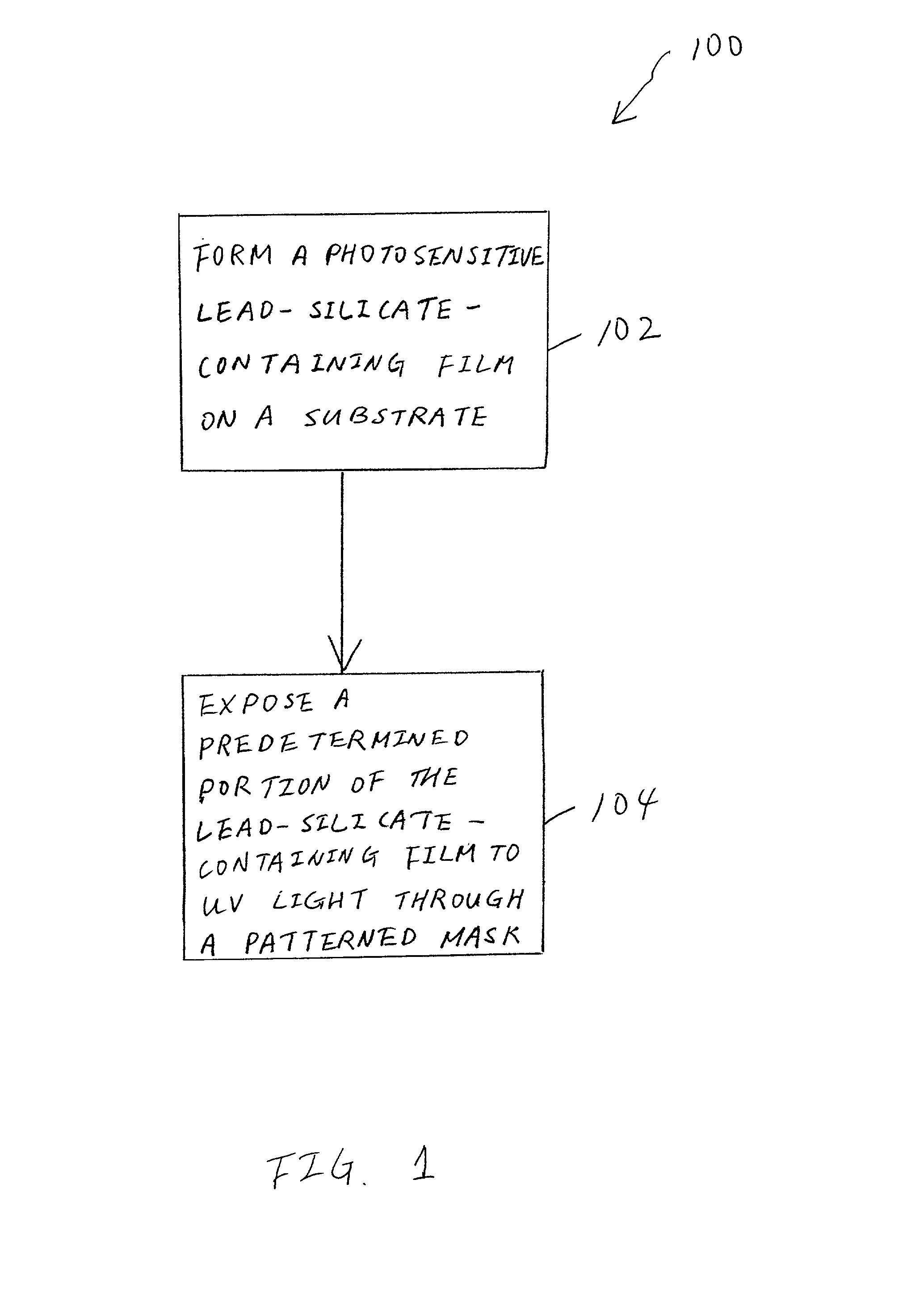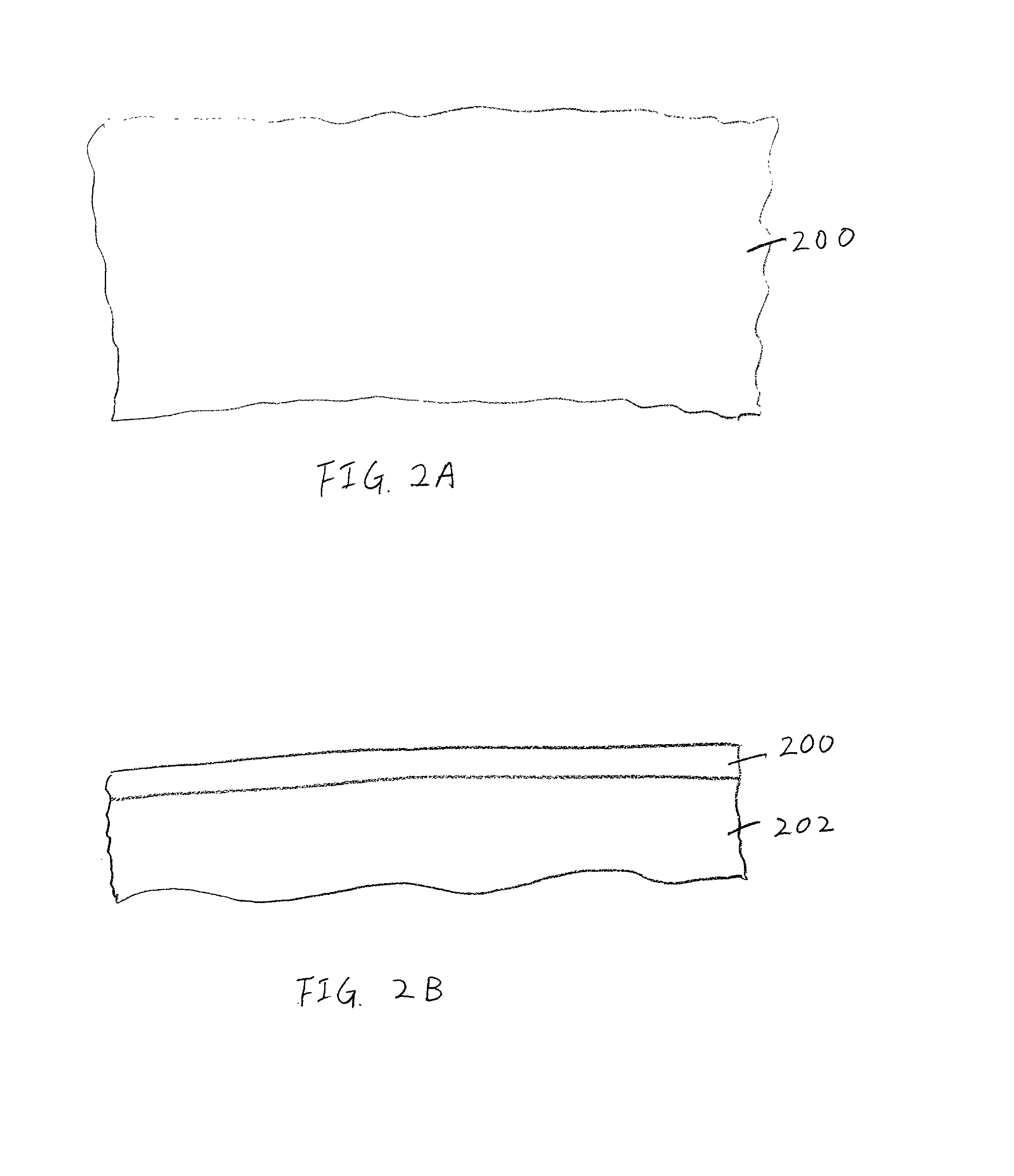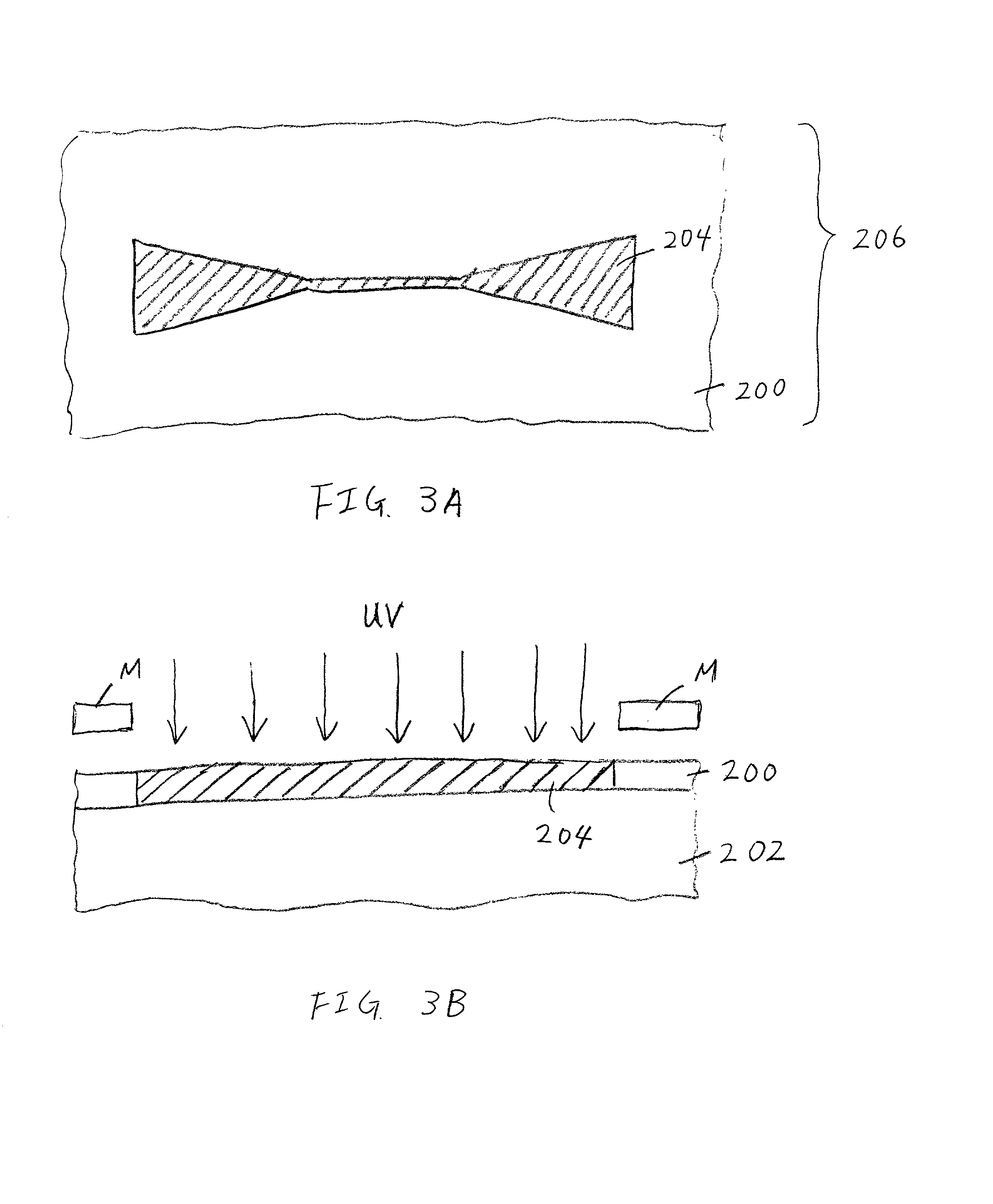Method for forming a refractive-index-patterned film for use in optical device manufacturing
- Summary
- Abstract
- Description
- Claims
- Application Information
AI Technical Summary
Problems solved by technology
Method used
Image
Examples
Embodiment Construction
[0019] To be consistent throughout the present specification and for clear understanding of the present invention, the following definition is hereby provided for a term used therein:
[0020] The term "refractive-index-patterned film" refers to a film (e.g., a lead-silicate-containing film) that includes at least one film portion of a predetermined pattern (design), whose refractive index was modified (i.e., increased or decreased) following formation of the film.
[0021] Process 100 includes first forming a photosensitive lead-silicate-containing film 200 on a substrate 202, as illustrated at step 102 of FIG. 1 and in FIGS. 2A-2B. Substrate 202 can be any suitable substrate known to those skilled in the art. For example, substrate 202 can be a quartz, silica-on-silicon, gallium arsenide (GaAs), indium phosphide (InP), gallium nitride (GaN), lithium niobate (LiNbO.sub.3), barium titanate (BaTiO.sub.3) or sapphire (Al.sub.2O.sub.3) substrate.
[0022] Photosensitive lead-silicate-containing...
PUM
 Login to View More
Login to View More Abstract
Description
Claims
Application Information
 Login to View More
Login to View More - R&D
- Intellectual Property
- Life Sciences
- Materials
- Tech Scout
- Unparalleled Data Quality
- Higher Quality Content
- 60% Fewer Hallucinations
Browse by: Latest US Patents, China's latest patents, Technical Efficacy Thesaurus, Application Domain, Technology Topic, Popular Technical Reports.
© 2025 PatSnap. All rights reserved.Legal|Privacy policy|Modern Slavery Act Transparency Statement|Sitemap|About US| Contact US: help@patsnap.com



